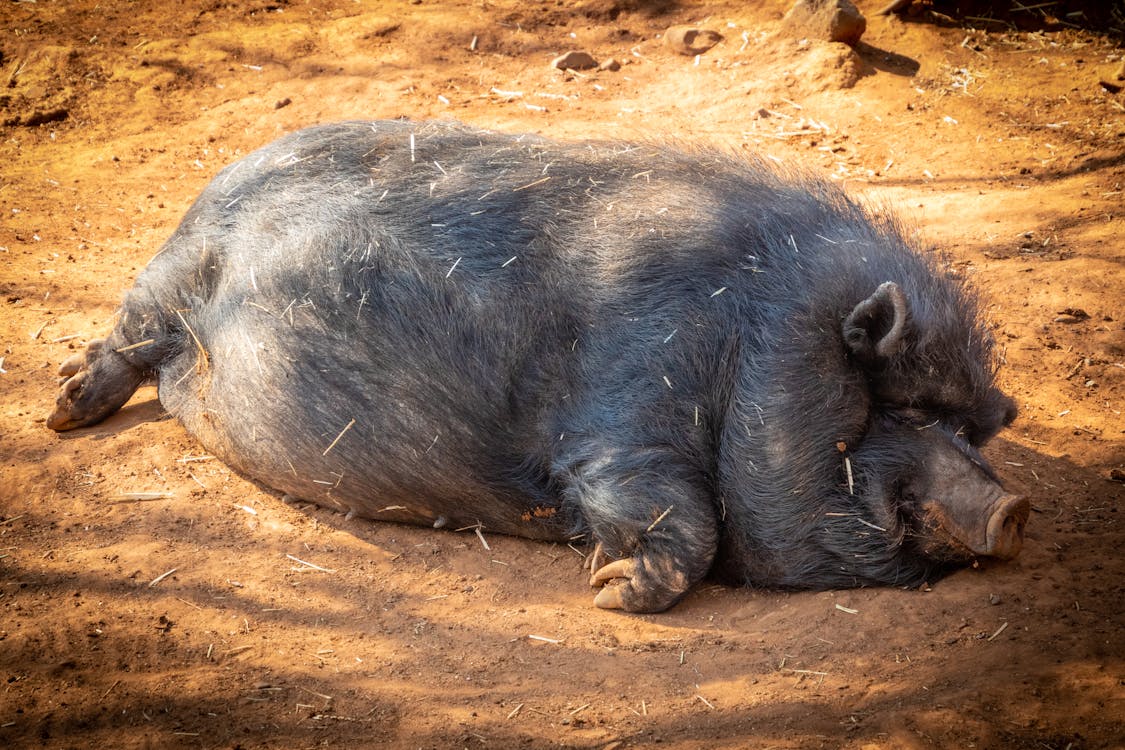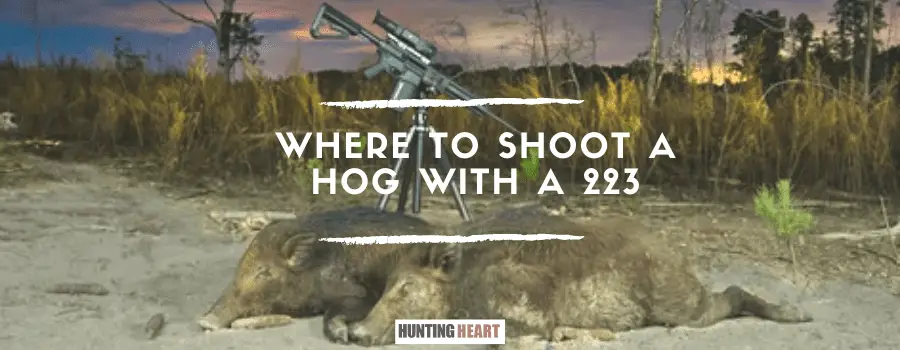As an Amazon Associate I earn from qualifying purchases.
Our Associate portal can be found here
Are you a novice trying your hand at hog hunting for the first time? Or a seasoned hunter looking to get out into the field to perfect your hog hunting skills? For whatever reason, knowing where to shoot a hog with a 223 is critical for your success.
According to experts, you can shoot them anywhere from the armpit to the eyeball, and it’s game over. The best kill shot up to 180 yards is to the shoulder, neck, and head. A more secure shot placement at more than 180 yards would be into the hog’s vitals. But the best spot is in the neck center and on the shoulder’s front curve.
You might have a frustrating time in the fields if you don’t know where to shoot a hog with a 223. But first, let us see why a 223 rifle is preferred in hunting circles.
Why the .223?
Knives and arrows might be tough to use when hunting wild hogs because feral swine hides are tough, making them difficult to penetrate. Thus, the preference for firearms for hunting in the U.S.
Many hunters swear by the.223 for taking down wild boars and pigs. The 223 Remington is considered the traditional caliber of the AR-15. Its popularity can be attributed to a variety of factors, including:
- It’s easily accessible.
- It is reasonably priced.
- Easily reloadable ammo.
- Unique bullet technology and ballistic developments. The ammo is designed to take down varmints and predators efficiently.
- It is easy for all levels of hunters to carry and operate in the field. The .223 is light in weight and has relatively low recoil.
- It’s easy to convert this platform to higher calibers.
Any seasoned hunter will tell you that the caliber you choose is the first step to bringing down tough-skinned hogs responsibly and humanely

Using a powerful caliber to hunt hogs might be unnecessary because the animal will not have much meat left on it. Shooting an adult hog with a lower caliber, on the other hand, will only prolong the animal’s suffering. The .223 is used because less lead is required, thanks to the high velocity of the bullet.
Where to Shoot a Hog With a 223 Rifle
Shot placement is very crucial when hunting wild boar for particular reasons.
- To kill the hog as swiftly and efficiently as practicable.
- Reduces the amount of damage to the meat.
- Helps preserve your ammunition.
That said, let us look at where you should point your .223 firearm the next time you’re stalking wild hogs in the hunting field.
The Head
For broadside shots, the best shot within your comfort zone that will stop feral hogs in their tracks is just behind the ear. A bullet between the ear and the eye is very effective. It penetrates the brain – lights out instantly.
If the hog is facing you, aim for the middle of the forehead, directly over the midline of the eyes, to penetrate the skull and brain. Although a brain shot kills a hog with minimal meat loss, execution is complex. Aiming for the head is especially difficult if the animal is in motion.
The center of the chest is also an excellent target, though the hog’s snout and jaw often conceal it. Your experience and marksman skills play a significant role here.
Vital Organs
Your knowledge of deer anatomy won’t help much when it comes to hogs. The essential organs (heart, liver, and lungs) are not located in the same cavity as those of a North American deer. If you utilize the same deer hunting skills, you’ll wind up hitting the feral pig’s belly.
Since the lungs are placed just above the shoulders, aim for just above the shoulder, located directly up the front leg. Hitting the vitals and shoulder will put the hog down on the spot, as will shooting the spinal column.
Ear Holes
The earhole makes a great point of aim, but only aim for a hog’s earholes if you have sufficient scope and patience. The ear opening allows access to the animals’ neck area and if you’re lucky, the brain. This is one of the simplest methods for ensuring quick death. A well-placed shot to a boar’s ear hole will result in the neck-snapping, culminating in a swift, humane death.
Where to Shoot a Moving Hog
The success of a shot placement is determined mainly by the hog’s body position at the time of impact. Is the target moving or static? Facing towards or away from you?
You’ll spot wild hogs in various positions. They could be feeding while wandering around mindlessly strolling around, or be lying about just basking in the sun. These feral creatures have also adapted to fast flee into hiding at the first sight of trouble in regions where they are heavily hunted, such as Texas. This is why it’s crucial you know where to shoot a hog with a 223, whether it’s stationary or moving.
Stationary pigs allow for accurate targeting and placement of the shot to a vital organ. Taking a shot at a moving hog, on the other hand, is a bit challenging. You must evaluate the shot with respect to the vital zone you aim to strike.
Target the neck area which is at the center of two kill locations – the head and vitals. This will stop a moving hog in its tracks. If you aim for a moving hog’s shoulder, you risk hitting it in the abdomen, which will result in a non-lethal wound prolonging suffering.
The Bottom Line
Ensure you adhere to the current regulations regarding feral hog hunting in the state you hunt. Familiarize with designated hunting zones, daily bag limits, and other restrictions to avoid breaking the law. And if you are wondering where to shoot a hog with a 223, the head, neck, ear holes, and vital organs are guaranteed to bring a wild pig down. All in all, happy hunting!
Amazon and the Amazon logo are trademarks of Amazon.com, Inc, or its affiliates.

36 years old, been hunting and fishing my entire life – love the outdoors, family, and all kinds of hunting and fishing! I have spent thousands of hours hunting hogs and training hunting dogs, but I’m always learning new stuff and really happy to be sharing them with you! hit me up with an email in the contact form if you have any questions.



